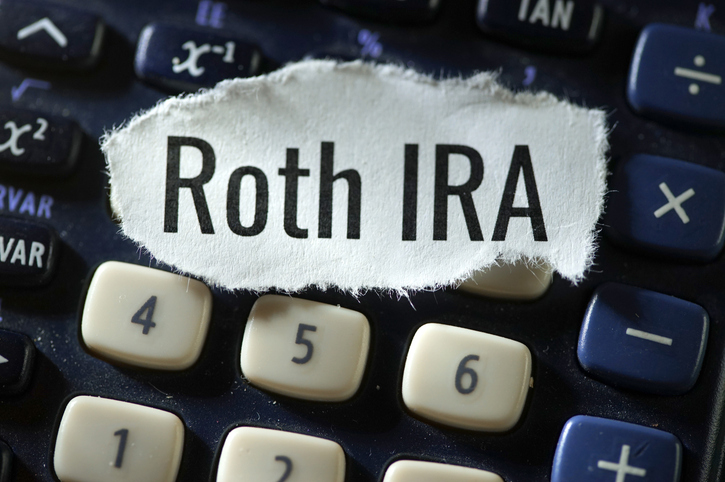Environmental, Social and Governance, or “ESG,” investing is getting bigger. According to a 2022 analysis from PricewaterhouseCoopers (PWC), “with a projected compound annual growth rate (CARG) of 12.9%, ESG assets are on pace to constitute 21.5% of total global [assets under management] in less than five years.” And, while one-fifth of all global investments seems improbably high, recent trends do indicate that this is large and stable field. As Bloomberg wrote in 2023, even after a downward correction, ESG portfolios still held more than $30 trillion in total assets. Here’s what you need to know if you want to invest in an ESG for your Roth IRA.
If you’re considering social investing for retirement, a financial advisor can help you determine whether it’s a good fit for your Roth IRA.
What Is Social Investing?
Socially responsible investing is the practice of investing around an asset’s societal impact. It can refer to a personal practice of selecting individual assets (that is, what stocks and bonds do you buy) or it can refer to an organizing principal of fund-based assets (that is, what assets does an ETF or mutual fund hold).
In both cases, with social investing you buy assets that align with your values and avoid assets that don’t. For example, environmentally conscious investors might buy into green technology firms or avoid fossil fuel companies.
While this type of investment has been politicized, social investing does not mean neglecting returns or long-term growth. And, some research suggests that the nature of socially-oriented companies can generate better long-term returns at the cost of short-term growth. However even this research is relatively soft. Overall, the principal of social investing is to select assets that will meet both your financial and personal goals.
There are two main acronyms in social investing: ESG, or “Environmental, Social, Governance” and SRI, or “Socially Responsible Investing.” The main difference is that ESG tends to refer to selecting specific assets and SRI tends to refer to an overall investing philosophy. By and large, however, the terms are used interchangeably.
Always Confirm Eligibility
Retirement investing is a little bit different than holding assets in a taxed portfolio, because the IRS puts some rules around what assets you can hold in a tax-advantaged portfolio. For a retail investor. it’s unlikely that these rules will come up, since an IRA can hold pretty much any category of mainstream financial assets. However, it’s still important to be aware of this issue.
Specifically, socially responsible investing typically involves fund-based investments (such as ETFs and mutual funds), and those portfolios can hold a range of assets. Some assets, most often commodities and derivatives, can raise eligibility issues for investing with an IRA. Before you invest, confirm that you can hold this type of asset in your IRA.
Check for Fees and Returns
In addition, as we note above, when investing for your retirement it’s essential to pay attention to your long-term returns. This comes up in three ways:
- Whether you are investing in a fund or an asset, do your research about its long-term returns. What kind of performance has this asset generated? What is its projection? What kind of technical indicators does it throw off? In other words, once you find an asset that meets your personal needs, put it through the same financial analysis you’d run on any other investment.
- Ignore the noise. Unfortunately, ESG/SRI investing has become an intensely political subject, with activists on both sides. Those who oppose ESG/SRI on political grounds also insist that these assets are financial disasters. Those who advocate for it on political grounds also insist that social investing outperforms the market. Both are incorrect. The truth is that some ESG/SRI investments do well, others underperform, and your specific returns will depend on the same sound, long-term planning as any other investment.
- If you choose to invest in a managed fund, check your costs. In general, funds organized around specific or goal-oriented indicators tend to charge higher fees. This is equally true for ESG/SRI funds, which can charge higher fees than similarly-situated assets. Check the costs and returns of your investment, and make sure that you’re getting your money’s worth from this investment.
ESG Mutual Funds and ETFs

This is probably the most popular form of ESG/SRI investing. There are many ETFs and mutual funds organized around ESG principals (about 14,500 according to one Bloomberg analysis). Investing in a managed fund can deliver several advantages. In particular, a firm can help align your investments with your personal goals tightly.
Fund-based assets are also popular choices for retirement investing. These can deliver more stabilized, long-term growth of exactly the type you want for your Roth portfolio. This is an advantage over more speculative assets like individual stocks and bonds.
Robo-Advisors
A robo-advisor can be another sound option for socially responsible retirement investing. These are a form of fund-based investing, and work along the same basic principals as an ETF or mutual fund. In both cases, the brokerage sets an index or organizing principal, then manages and rebalances a collection of assets to keep the portfolio aligned with its index. The difference is that, with a robo-advisory, this process is done automatically by a trading algorithm rather than by an individual broker.
The two biggest advantages to a robo-advisor, in this context, are granularity and cost. Robo-advisors generally let you set your personal risk tolerance. They then balance assets around these risks, which in a sense can let you build your own target date fund by shifting the risk preferences in your Roth IRA over time. Robo-advisors also tend to charge lower fees than mutual fund or even an ETF. This can be particularly important for specialized investments, like an ESG/SRI fund, which tend to be more expensive.
Ordinarily, another key advantage to a robo-advisor is significant tax management and tax-loss harvesting, but this is not relevant for a Roth IRA.
The biggest disadvantage can be alignment. A robo-advisor may not be as good at aligning your portfolio with your personal goals as a trusted brokerage. For goal-oriented investing like ESG/SRI, this is a significant disadvantage, as it can defeat the entire purpose of your strategy.
Individual Assets
Mutual funds, ETFs and robo-advisors all effectively automate the process of selecting assets that align with your values. This also has the critical advantage of diversification, so that your portfolio is sheltered from the downside of individual performance. However, you are also free to seek the upsides of individual performance.
With active management, on the other hand, you seek out specific stocks, bonds and other assets to purchase. For example, you might buy stock in a company building green energy solutions. Or you might hold bonds in a woman-owned firm. This lets you make sure that each firm meets your social goals, eliminating the fairly significant risk that a fund will hold assets you dislike and disagree with. Financially, you can also capture the upside of a single asset’s strong performance.
However, there are equal and opposite downsides. First, this will require a lot of legwork. Smart active investment is time consuming, often difficult work. Doing this well is not a small task. Second, individual investment tends to be very risky, particularly if you are buying equities. The more you hold in a single stock, the more exposed you are to that company’s risks and fortunes. This can be a valuable segment of your portfolio, but it’s usually wise to buy individual assets with your speculative capital, setting aside the majority of your money for diversified, long-term holdings.
Bottom Line

Socially responsible investing is the practice of making sure your money aligns with your values. When you build a Roth IRA, long-term assets will typically be the watchword, and fortunately there are lots of ways to invest for both your values and your future.
Investment Planning Tips
- A financial advisor can help you build a comprehensive retirement plan. Finding a financial advisor doesn’t have to be hard. SmartAsset’s free tool matches you with up to three vetted financial advisors who serve your area, and you can have a free introductory call with your advisor matches to decide which one you feel is right for you. If you’re ready to find an advisor who can help you achieve your financial goals, get started now.
- Taxes are an important part of investment planning. Profits from assets that are sold less than a year after they’re purchased are subject to ordinary income taxes. But the gains from investments sold more than a year after being bought are taxed at the more favorable long-term capital gains rate. SmartAsset’s capital gains calculator can help you estimate your tax liability when selling an investment.
Photo Credit: ©iStock/coldsnowstorm, ©iStock/Kameleon007, ©iStock/fizkes